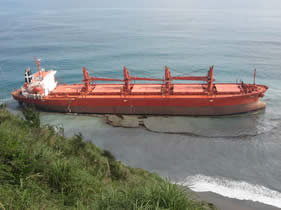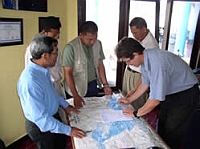La planification des opérations pour contenir une marée noire (1/2) (en anglais)
Contigency Planning in Oil Spill Response (1/2)
Careful planning is an essential preparation for any successful operation, especially an emergency one. Response to accidental spillage of
oil is a typical example.
Many people may be affected by an oil spill and many organisations have duties to perform apart from the task of
physical clean-up.
 For example, an incident involving an oil tanker may entail search and rescue, lightering of cargo and salvage activities,
all of which may impinge upon any spill response. There is often concern for the effects on the environment, fisheries, industry and recreation
as well as considerations for public health and safety. There will inevitably be conflicting interests and the news media are always quick to
expose any indecision, weakness or disagreement. Such situations are easier to resolve when a well prepared and tested contingency plan is
available.
For example, an incident involving an oil tanker may entail search and rescue, lightering of cargo and salvage activities,
all of which may impinge upon any spill response. There is often concern for the effects on the environment, fisheries, industry and recreation
as well as considerations for public health and safety. There will inevitably be conflicting interests and the news media are always quick to
expose any indecision, weakness or disagreement. Such situations are easier to resolve when a well prepared and tested contingency plan is
available.

Response concept
Contingency planning should follow a tired concept, the so called 'tiered response concept'.
| Tier 1: | Plan for oil spills on a local level |
| Tier 2: | Plan for oil spills that affect a larger area or for incidents that cannot be dealt with on a local level |
| Tier 3: | Supraregional or national plan |
Contingency plans are best divided into two distinct parts:

| Part 1: | a descriptive policy document outlining the overall strategy of the plan, i.e. an action checklist with with pointers to information sources |
| Part 2: | an operational plan concerned with procedures to be followed when a spill occurs |
